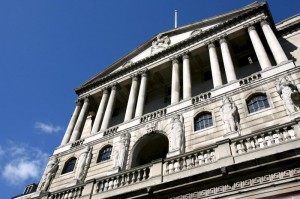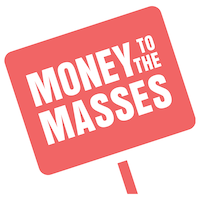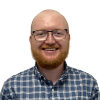This article is continually updated to bring you the latest analysis on when interest rates are likely to rise or be cut. Sign-up to our newsletter to receive updates to your inbox.
When will interest rates go down (or back up)?
On 19th December 2024, the Bank of England (BOE) held the base rate at 4.75%, after cutting it in November. The BOE cut the base rate twice in 2024, after it peaked at 5.25%.
Will interest rates continue to fall? The market is pricing in that the Bank of England base rate will most likely be cut again in March 2025 to 4.5%. By the start of 2026 the base rate is predicted to fall to 4.27% before slowly falling to around 4.05% in 2029, as shown in the table below. However, these predictions are much higher than predictions made just a few weeks ago, as a result of the market's reaction to the Autumn Budget and concerns that inflation may start to rise aggressively again. This is why mortgage rates have started rising.
The BOE raised the base rate 14 times between December 2021 and August 2023 in an attempt to reduce the UK's annual inflation rate, which subsequently fell as low as 1.7%, down from a high of 11.1%. But inflation has since risen back to 2.5%, which is above the BOE target rate of 2%. The BOE does accept that inflation is likely to increase slightly during the next year, partly the result of the government's tax hikes and spending plans announced in the Autumn Budget. The BOE has stated that it will not hesitate to raise interest rates again if inflation starts to accelerate higher.
Latest UK interest rate predictions
| Date | Interest rate predictions
(Bank of England base rate) |
| Now | 4.75% (actual) |
| March 2025 | 4.50% (predicted) |
| January 2026 | 4.27% (predicted) |
| January 2027 | 4.2% (predicted) |
| January 2028 | 4.09% (predicted) |
| January 2029 | 4.05% (predicted) |
| January 2030 | 4.05% (predicted) |
(data derived from Bank of England Overnight Swap rates)
Just a few months ago the market was predicting that the BOE base rate would fall to 3.14% in 2029, but now the base rate is predicted to stay much higher.
The Bank of England will next meet on 6th February 2025 to decide what level interest rates should be set at. Below I explain what you should be doing now before going on to explain what will ultimately determine when interest rates will go down and how far they might fall. Bear in mind that the market's predictions of where interest rates will be in the future are not guaranteed.
Should you fix your mortgage rate now?
In recent weeks a lot of mortgage lenders have begun pulling their fixed-rate mortgage deals and raising the rates on their best deals as they grow concerned about the outlook for inflation and the government's spending plans.
At the time of writing, the average 2 year fixed mortgage rate is now 5.19%, assuming a 75% loan to value. However the best rate, assuming a 60% loan to value, is much lower at 4.17%. Yet this rate is more that 0.3% higher than the equivalent best rate just a few months ago.
Even if you are currently on a fixed-rate mortgage, where the fixed period isn't due to expire for another 6 months, it is possible to lock in a new rate now, which will start when your current fixed deal ends, avoiding any early redemption charges from your existing lender.
With some of the best fixed-rate mortgage deals starting to disappear once again, or rising, it is important to ensure you act quickly, to get the best deal possible. It is worth pointing out that best two-year tracker mortgage rate is 4.69%, significantly higher than the current best two-year fixed rate of 4.17%. So you need to consider all of your options especially if you believe that the BOE will continue to cut its base rate.
That's why I strongly recommend you speak to a mortgage adviser as soon as possible, who can look at all your options, including variable rate and tracker mortgages as well as the increasingly popular option of an offset mortgages. They can also ensure that you secure the best deal even if mortgage rates begin falling during the mortgage application process. If you don't know a mortgage adviser whose opinion you trust, then follow these simple steps to get a free mortgage review* from a vetted FCA regulated mortgage professional:
- Click the link above
- Answer the four quick questions about your situation
- Enter your email etc
- Then select the "Review my Mortgage" button
It's as easy as that. Then an expert mortgage adviser will check if you are eligible to remortgage for free and with no obligation. They will also tell you precisely how much you could save. Typically the free remortgage check saves people around £80 per month per £100,000 of mortgage.
Is your fixed rate deal coming to an end?
A free mortgage review will tell you the best option even if that's staying with your existing lender - No obligation
How the Bank of England base rate is set
The Monetary Policy Committee (MPC) is the nine-person committee, within the BOE, that determines the BOE base rate. Usually, every six weeks the Bank announces the MPC's interest-rate decision. You can find a full schedule of decision dates on the Bank of England website. Whenever a decision is announced the MPC meeting minutes are also published. These minutes are scrutinised by investors for any hints of when rates might go up or down in the future. For example, they would see how many of the nine-person committee voted for interest rates to go up, down or stay the same.
The forecasting of the Bank of England base rate has been transformed in recent years. The former Governor of the Bank of England (BOE), Mark Carney, originally created a notional link between the UK unemployment rate and the BOE base rate before replacing this with 18 economic indicators which still inform the BOE's interest rate decision making today, under current Governor, Andrew Bailey.
When does the market think mortgage rates will next rise or be cut?
The Bank of England has moved the goalposts numerous times, in recent years, on when interest rates will likely go up or go down. Of course, when interest rates rise or fall, mortgage rates will follow suit. Below is a short potted history to highlight how we have got to where we are today:
- Interest rates were slashed after the financial crisis in 2007/2008, from over 5% down to 0.5%, in order to support the UK economy.
- After much speculation that interest rates would finally go back up in 2015 this didn't happen because inflation suddenly turned negative. For an economy to attain a healthy level of growth the BOE aims for an official inflation target of 2%. Raising rates tends to send inflation lower, therefore the BOE left interest rates unchanged.
- The Brexit vote was a huge game-changer. The previous talk was all about when interest rates would go up. Suddenly the talk became concerned with the chance of an economic slump because the UK had decided to leave the European Union. The Bank of England was so concerned that it decided to cut interest rates from 0.5% to 0.25% in August 2016 and launch a new bout of Quantitative Easing (QE) to try and stimulate economic growth.
- Yet the UK economy proved surprisingly resilient after the EU referendum. It led some people, even the then Prime Minister Theresa May, to suggest that the BOE overreacted when it cut interest rates.
- The Bank of England finally raised interest rates in November 2017 for the first time in over a decade, back to 0.5%.
- Then in August 2018 the Bank of England raised the bank base rate from 0.5% to 0.75% as the economic outlook improved. This was the highest level in almost a decade.
- However, the arrival of the COVID-19 pandemic changed everything and the BOE carried out two emergency interest rate cuts in March 2020, first from 0.75% to 0.25% and then from 0.25% to 0.1%.
- Between December 2021 and August 2023 the BOE increased its base rate at 14 consecutive meetings, taking the base rate from 0.1% to 5.25% which is the highest level in over 15 years. The BOE is attempting to quell rising inflation which is above the BOE's official target of 2%.
- Between September 2023 and August 2024 the BOE kept the base rate unchanged at 5.25%.
- On 1st August 2024, the Monetary Policy Committee (MPC) voted to cut the BOE base rate by a quarter of a percentage point, to 5.00%.
- On 7th November 2024, the Monetary Policy Committee (MPC) voted to cut the BOE base rate from 5% to 4.75%.
- The market is now pricing in that the BOE base rate is likely to fall slowly to around 4.05% in five years' time.
The indicators to watch that will determine when interest rates go up or down
The BOE uses a number of economic indicators when deciding whether rates will rise or be cut. So understanding the key economic indicators is important when judging when interest and mortgage rates are likely to rise or be cut. Below is a roundup of the most important indicators to keep an eye on.
- Inflation has started rising again – The annual UK inflation rate has risen from a recent low of 1.7% in September 2024 to 2.5% by December 2024. It means that inflation is back above the official 2% target rate. The BOE has stated that inflation will increase slightly as we head through the beginning of 2025, partly as a result of the Autumn Budget, but the rise is predicted to be temporary. However, the BOE will raise interest rates once again if rising inflation proves persistent.
- Official support for rate cuts has weakened – The MPC meeting minutes from December 2024 showed that the committee hold the base rate at 4.75%. Three members voted to cut the base rate by 0.25% while six members voted to leave it unchanged. As it is a majority vote the bank base rate was held at 4.75%. The Bank of England has urged caution and stated a flurry of interest rate cuts is unlikely, especially after the spending plans and tax hikes announced in the government's Autumn Budget is likely to cause inflation to rise.
- The UK economy is growing less than expected – The accepted definition of a recession is when the economy shrinks for two consecutive quarters, a feat the UK achieved in the second half of 2023. It meant that the UK economy only grew by 0.1% for the whole of 2023. This is the weakest year for economic growth since 2009, if you ignore the 9.9% slump in 2020 which was caused by the Covid pandemic. However, it has been confirmed that the UK economy bounced back in the first quarter of 2024 and grew by 0.7%, which was higher than economists' predictions. The UK economic recovery continued in the second quarter of 2024 as official figures showed that the UK economy grew by a further 0.5%. However, the UK economy grew at just 0.1% in the third quarter of 2024, which is less than expected. It then didn't grow at all in October and November 2024. Weak economic growth reduces the chance of another interest rate rise while strong economic growth makes another interest rate rise more likely in order to avoid the economy overheating.
- The unemployment rate has jumped – The number of people employed rose by 36,00 in the three months to November but the unemployment rate has risen to 4.4%, which is the highest level since May 2024. Strong employment numbers increase the chances of an interest rate rise as do rising wages, while weak employment numbers make interest rate cuts more likely.
- UK economic growth forecasts are mixed – In November 2024 the BOE downgraded its 2024 growth forecast for the UK economy. It now predicts the UK economy will grow by 1% in 2024 (down from its previous prediction of 1.25%). However, it increased its growth forecast for 2025 from 1% to 1.5%.
Get a FREE mortgage review
Our partner Vouchedfor will help you get the best mortgage rate with a free mortgage review
- From a 5-star rated mortgage adviser
- Typically save £80 per month per £100,000 of your mortgage
- No obligation
What to do next
The ability to remortgage and/or fix your mortgage has become more difficult over recent years as the rules surrounding the affordability tests when applying for a mortgage were tightened leaving some borrowers stranded on their existing deals. It's important to calculate the impact of an interest rate rise and seek advice from a mortgage expert ahead of time by following the steps below.
Whether you are on a tracker mortgage, variable rate mortgage or looking to remortgage your existing fixed rate deal that is coming to an end the steps below will take you a few seconds, but could prevent your mortgage repayments crippling your finances in the future and help you secure a lower rate while they are still available.
Step 1 – Calculate the impact on your monthly mortgage payments
Quickly calculate the impact of an interest rate cut (or rise) on your mortgage payments with this interest rate calculator. Just enter the original details of your mortgage, such as the original amount borrowed and the original term to see how your monthly mortgage payments could change based on different interest rate rises.
So let's say you had borrowed £200,000 for 30 years at a variable rate of interest. In the calculator you would enter the original loan amount (£200,000 on a repayment basis), the original term (30 years) and the current rate of interest you are paying (let's assume 5.25%). The Bank of England base rate is currently 4.75%. So let's say you want to see the impact if the base rate was cut by a further 0.25% (to 4.5%) you just enter -0.25% into the ‘anticipated rate change' box and click calculate.
The result shown below the interest rate calculator tells you that your current mortgage repayment would reduce from £1,104 a month to £1,074 a month. That's a saving of £31 per month.
However, if you have a fixed-rate mortgage deal then your monthly repayments won't automatically reduce if the Bank of England base rate is cut, but you may be wondering how much your repayments will be when you come to remortgage.
Even though the base rate of interest was cut in August 2024 and November 2024 (and is likely to be cut further in the coming months), those coming to the end of 2 and 5-year fixed-rate deals will likely still end up paying more on their new mortgage deal. You can use our interest rate calculator to work out how much your future repayments are likely to be.
So let us assume the same numbers used above but with a fixed rate mortgage at 2.5% that is due to come to an end.
Then you would enter the terms of your original mortgage deal as before but would instead base the ‘anticipated rate change' figure on the difference between the Bank of England base rate at the time you took out your fixed rate mortgage (we have used 0.1% in our example) and where it is projected to be in the future when you come to remortgage.
So if you want to assume the BOE base rate may be cut to 4.5% by the time your remortgage, you could set the ‘anticipated rate of change' to 4.4% (i.e. 4.5% – 0.1%).
This would mean that once your fixed rate mortgage comes to an end and you remortgage, your monthly payments could increase from £790 a month to £1,317 a month. That's an extra £527 a month that you'd need to find.
Of course this is only a guide as to what your new mortgage repayments might be as it doesn't take into account the reduction in the size of your mortgage as a result of your previous monthly repayments or a fall in market interest rate expectations.
Once you have the result move on to step 2 below.
Interest rate calculator
Quickly find out how much your mortgage payments will increase or decrease by when interest rates change
Use the free calculatorStep 2 – The best way to find out your mortgage options
Most consumers will wrongly assume that using a price comparison site is the best thing to do when looking to remortgage. However, bear in mind
- many mortgage deals are only available via mortgage advisers so don't appear on price comparison sites
- not everyone can get the rates quoted on price comparison sites
- price comparison sites don't take into account your credit rating or personal circumstances which will determine whether a lender will actually lend to you. For example you may not be eligible for the deals quoted by comparison sites and won't find out until they credit check you. That in itself will then hinder future mortgage applications
That is why you are almost always better off dealing with an independent mortgage adviser rather than going it alone. This is why 70% of borrowers now use a mortgage adviser to find the best deal from a lender who will actually lend to them. Therefore, we recommend getting in contact with a mortgage advisor yourself. You can arrange a free remortgage review using this online tool*.
If you already have an independent mortgage broker that you trust then I suggest you get in touch with them as there has never been a better time to remortgage.
Further reading – should you fix your mortgage rate now
If a link has an * beside it this means that it is an affiliated link. If you go via the link Money to the Masses may receive a small fee which helps keep Money to the Masses free to use. But as you can clearly see this in no way influences our editorial integrity. The following link can be used if you do not wish to help Money to the Masses however you will not receive any stated offers – Vouchedfor







